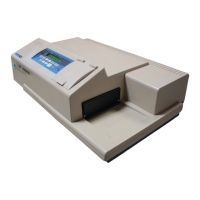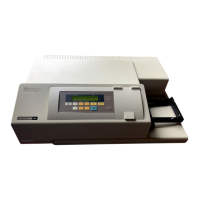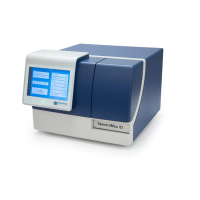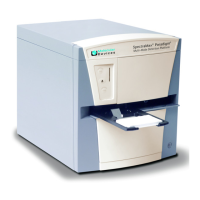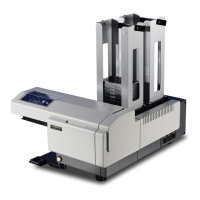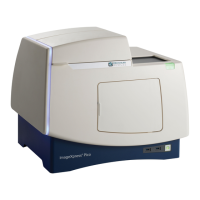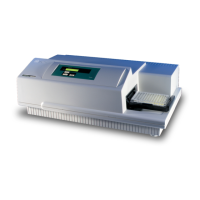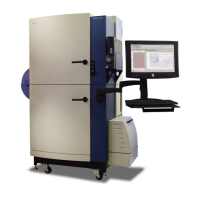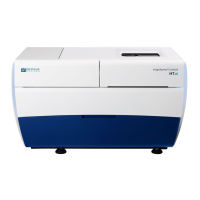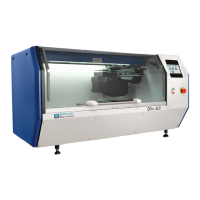What does 'NVRAM Stage offset error' mean on Molecular Devices SpectraMax M5?
- JJanet SmithSep 23, 2025
If your Molecular Devices Laboratory Equipment displays 'NVRAM Stage offset error', it means the stage offset data is unreasonable.
What does 'NVRAM Stage offset error' mean on Molecular Devices SpectraMax M5?
If your Molecular Devices Laboratory Equipment displays 'NVRAM Stage offset error', it means the stage offset data is unreasonable.
What to do if I see Fatal Error Codes on my Molecular Devices SpectraMax M5 display?
If you're seeing fatal error codes on the display of your Molecular Devices Laboratory Equipment, try these steps: Ensure the cuvette door is closed during the power-up sequence. If the problem persists, leave the instrument on for about five minutes, then turn it off and back on again.
Why is there a signal level saturation in Molecular Devices SpectraMax M5 Laboratory Equipment?
Signal level saturation during a cuvette read on your Molecular Devices Laboratory Equipment could be due to the cuvette door being open.
Why is there a reference level saturation in Molecular Devices SpectraMax M5 Laboratory Equipment?
Reference level saturation during a cuvette read on your Molecular Devices Laboratory Equipment could be due to the cuvette door being open.
What does 'NVRAM Battery' mean for Molecular Devices SpectraMax M5 Laboratory Equipment?
The 'NVRAM Battery' message on your Molecular Devices Laboratory Equipment indicates that it is time to replace the NVRAM battery (U3).
What does 'Absorbance boot check failed' mean on Molecular Devices Laboratory Equipment?
If your Molecular Devices Laboratory Equipment displays 'Absorbance boot check failed', it means the plate or cuvette check failed.
What does 'grating motor driver faulty' mean on Molecular Devices SpectraMax M5 Laboratory Equipment?
If your Molecular Devices Laboratory Equipment shows 'grating motor driver faulty', it means the grating motor didn't move to where it was commanded to in a reasonable time.
What does 'monitor ADC faulty' mean on Molecular Devices SpectraMax M5 Laboratory Equipment?
A 'monitor ADC faulty' message on your Molecular Devices Laboratory Equipment indicates an error was found during the periodic check of the ADC system.
What does 'grating error' mean on Molecular Devices SpectraMax M5 Laboratory Equipment?
A 'grating error' on your Molecular Devices Laboratory Equipment means that the grating did not move to its photo interrupt in a reasonable time, or it can't find its photo interrupt.
What does 'carriage motion error' mean on Molecular Devices Laboratory Equipment?
A 'carriage motion error' on your Molecular Devices Laboratory Equipment means that the carriage did not move to either of its photo interrupts in a reasonable time, or it can't find its photo interrupt.
Explains how the technology normalizes well volumes to 1-cm cuvette readings.
Explains control via SoftMax Pro Software for instrument functions.
Details the LCD display and membrane keys for instrument control.
Describes the location, function, and operation of the microplate drawer.
Discusses the cuvette chamber and proper cuvette use and alignment.
Details components on the back panel: power switch, ports, fuse box, label.
Explains absorbance measurement (A = -log(I/Io)) and transmittance (T = I/Io).
Explains the Beer-Lambert law and absorbance proportionality to pathlength.
Identifies turbidity and sample color as common interferences for PathCheck.
Details TRF mode, its advantage over fluorescence intensity, and detection parameters.
Explains FP mode, data sets, and calculation of polarization (mP) and anisotropy (r).
Describes luminescence as light emission from non-thermal processes.
Covers power safety, environment, temperature, and instrument handling warnings.
Step-by-step guide for placing, connecting, and powering the instrument.
Discusses adjusting wavelengths, plate blanks, and PathCheck for fluorescence.
Details factors for optimization like wavelengths, filters, PMT voltage, and Stokes' shift.
Covers power, environment, electrical shock, optics handling, and organic solvent precautions.
Procedure to manually open the microplate drawer if it fails to open.
Lists error code ranges and their general causes.
Differentiates between Fatal and Warning messages.
| Wavelength Range | 200 - 1000 nm |
|---|---|
| Light Source | Xenon flash lamp |
| Software | SoftMax Pro Software |
| Wavelength Range (Fluorescence) | 250 - 850 nm |
| Wavelength Selection | Monochromator |
| Shaking | Linear, Orbital, and Double Orbital |
| Detection Modes | Absorbance, Fluorescence, Luminescence |
| Plate Formats | 6- to 384-well plates |
| Temperature Control | 4°C above ambient to 45°C |
| Data Interface | USB |
